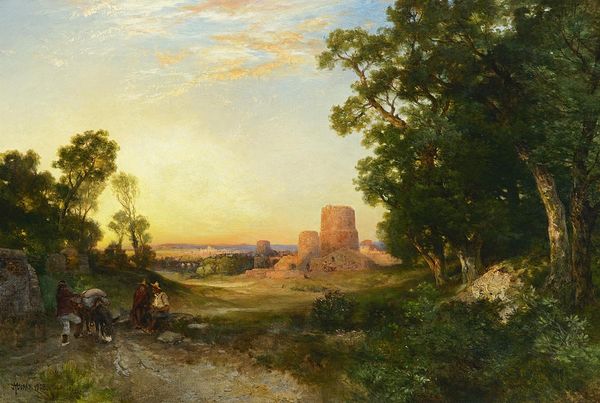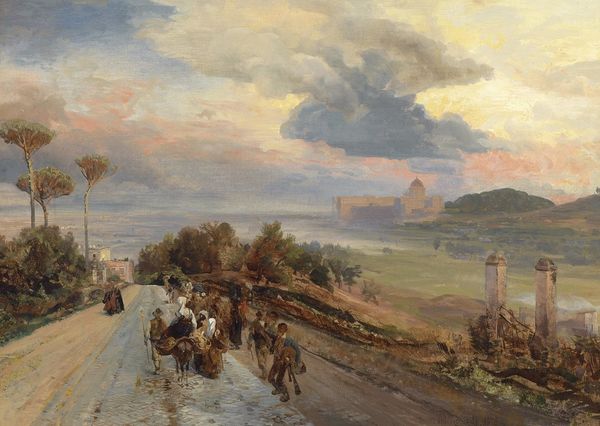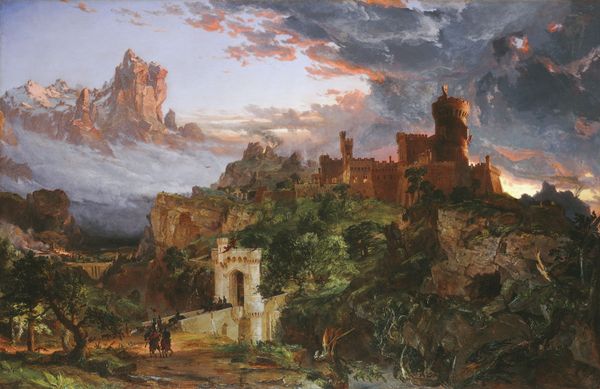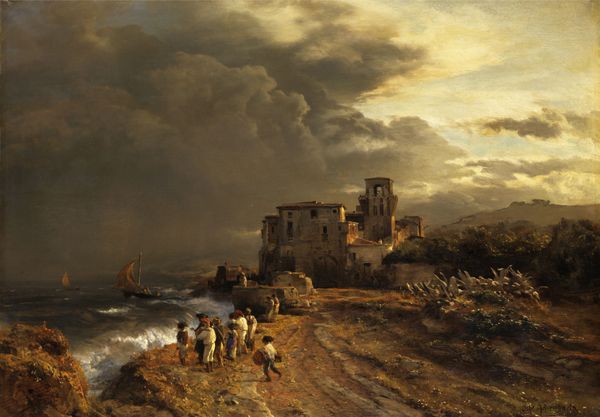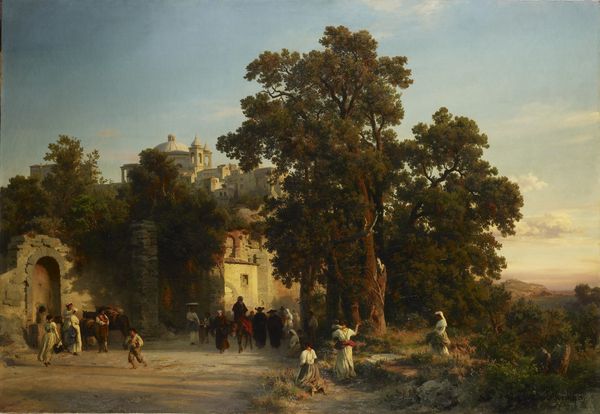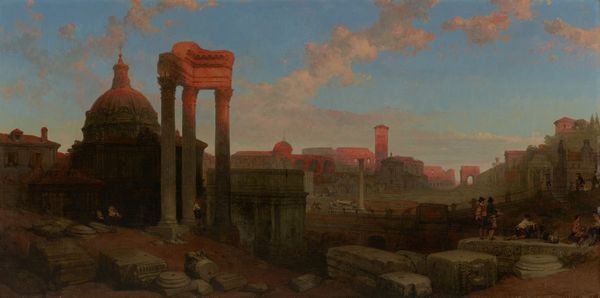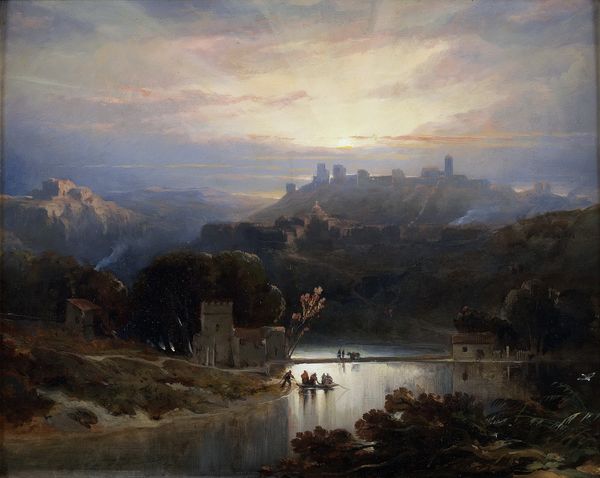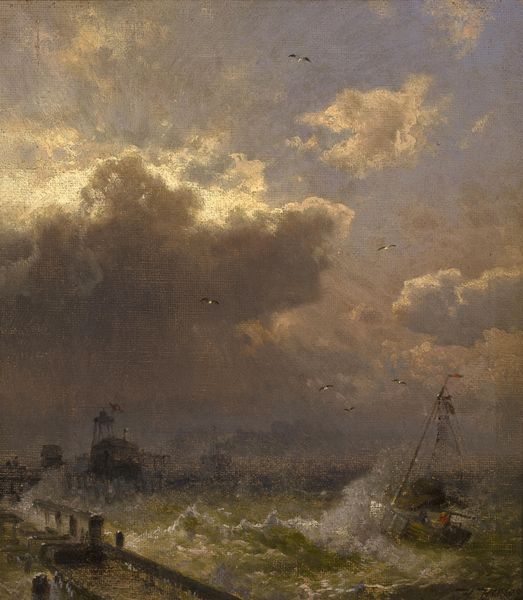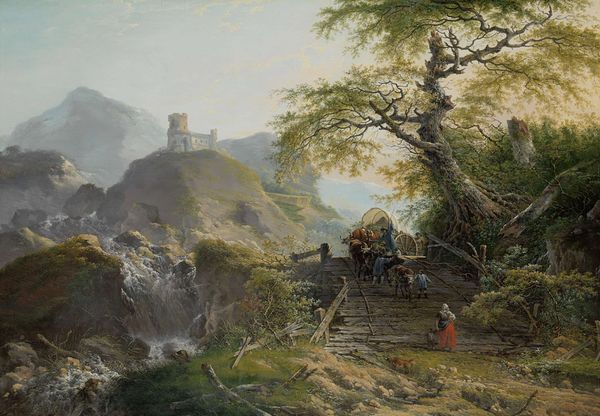
Dimensions: 86.5 x 165 cm
Copyright: Public domain
Curator: Hermann David Salomon Corrodi painted "Appia Antica near Terracina" in 1905, employing oil on canvas. Editor: Immediately, the horizontal composition strikes me—a vast sky dominating the weathered road populated with figures. There is a feeling of immense space and fading light. Curator: Absolutely. Corrodi, known for his romantic landscapes, was keen to capture the interplay between antiquity and the daily lives of people. It’s painted en plein air. Consider the means by which the workers are presented along their paths in contrast to the monumental scale of ancient roman ruins; we begin to understand how modernity reshapes these historical elements. Editor: Precisely! His style showcases this tension, too. We have clear, almost realist depictions of people with the impressionistic softness of the sky behind them. Look how the chromatic scale is carefully built and perfectly distributed within the painting to support the narrative that Corrodi wanted to tell. Curator: Considering that Corrodi marketed and sold his artistic labor to a largely tourist audience, this composition reinforces orientalist desires through the safe portrayal of labor circulating around crumbling remnants of the distant Roman Empire. The labor and the materials the workers engage in suggest a temporal relationship to the materiality of empire. Editor: I understand your point. However, don't you feel this work goes beyond just mere reproduction of those established power structures? The brushwork is expressive, isn't it? You can almost feel the evening breeze just by observing Corrodi’s manipulation of pigment across this linen substrate. Curator: Well, that breeze likely brought with it specific odors of the marketplace and the working peoples he carefully staged into his frame. The "Appia Antica near Terracina" painting prompts critical analysis about who gets to represent and consume a place like the Italian countryside at the dawn of the 20th century. Editor: Perhaps... For me, in summary, the visual delight is in Corrodi's masterful application of oil to evoke an almost dreamlike landscape—the colors, so warm; the composition, so evocative! Curator: And I'm left thinking about the economic and social currents that converged in its making and viewing—art history reflecting history itself.
Comments
No comments
Be the first to comment and join the conversation on the ultimate creative platform.

